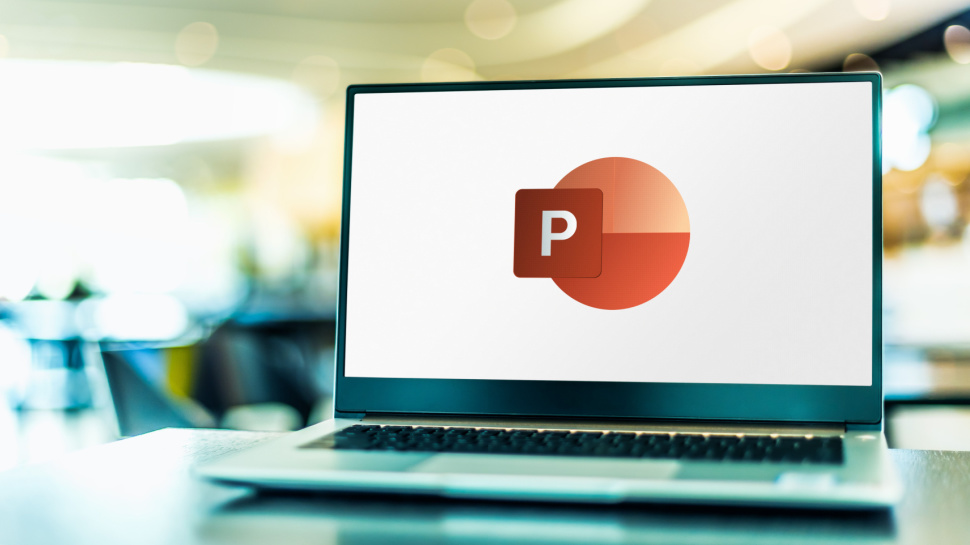How to print from PowerPoint
Master the art of printing from PowerPoint

Printing from PowerPoint is an essential task for presenters, students, and professionals who need to distribute physical copies of slides, handouts, or notes.
Whether you’re preparing for a presentation, a training session, or simply need to have a hard copy of your work, knowing how to print correctly from PowerPoint ensures that your materials are clear, professional, and well-organized.
In this guide, we will walk you through how to print from PowerPoint, highlighting various methods and options that best suit your needs.
How to print from Powerpoint
Tools & requirements
Before diving into the step-by-step instructions, ensure you have the following tools ready:
- A computer with PowerPoint installed (Microsoft PowerPoint or PowerPoint Online)
- One of the best home printers (Wi-Fi enabled or connected via USB)
- The PowerPoint presentation you want to print
- Internet connection (for PowerPoint Online)
- Paper for printing (A4, Letter, or any size you prefer)
- A PDF viewer (optional for saving files as PDF)
1. Print a Full Presentation
One of the most common reasons for printing from PowerPoint is to print an entire presentation, either for record-keeping or distributing it to others.
Steps:
- Launch PowerPoint on your computer and open the presentation you want to print.
- Click on the “File” tab located in the top-left corner of the screen.
- From the drop-down menu, select “Print.” This will open the print settings page where you can adjust the settings as needed.
- In the “Printer” section, select the printer you want to use. If your printer is Wi-Fi enabled, ensure it is connected to the same network as your computer.
- In the “Settings” section, you will find various options:
- Choose whether you want to print “All Slides” or specify certain slides by selecting “Custom Range” and entering the slide numbers (e.g., 1-5).
- You can print one slide per page or use multiple slides per page by selecting “Handouts.”
- Choose whether you want to print in color or grayscale and if the slides should be collated.
- You can choose between portrait or landscape orientation based on how you want your slides printed.
- Once you’ve reviewed your settings, click the “Print” button to start printing.
2. Print Specific Slides
Sometimes, you may not need to print all slides from a presentation, especially if it's lengthy. You can choose to print only selected slides.
Steps:
- Open the PowerPoint presentation from which you want to print certain slides.
- Navigate to the “File” menu and select “Print"
- In the “Settings” section, instead of selecting “All Slides,” choose “Custom Range” and type the slide numbers you wish to print. For example, if you want to print slides 2, and 7, enter them as “2, 4, 7” (separated by commas). If you want to print a range, enter “2-5” for slides 2 through 5.
- Once you've selected the specific slides, adjust other settings as needed and click “Print.”
This method is useful when you only need certain slides from a larger presentation, saving both paper and ink.
3. Print Handouts or Notes Pages
PowerPoint allows you to print handouts or note pages, which can be especially helpful for meetings or presentations. Handouts typically include several slides on one page, while note pages provide space for additional comments or explanations.
Steps:
- Launch PowerPoint and open the file you want to print.
- Navigate to the print settings
- Under the “Print Layout” section, choose one of the following:
- Handouts: If you select this option, you can print multiple slides per page (e.g., 3 slides per page). You can also add space for notes next to each slide.
- Notes Pages: If you select “Notes Pages,” you will print each slide along with its speaker notes. This is helpful if you need to have talking points or extra details with each slide.
- Once you’ve selected the desired layout, you can also choose to print in colour or grayscale and specify the number of copies.
- After adjusting the settings, click “Print."
4. Save Slides as PDF and Print
Saving your PowerPoint slides as a PDF before printing offers flexibility in case you need to send the file to someone or ensure a consistent format across devices.
Steps:
- Open the file in PowerPoint.
- Instead of selecting “Print,” go to “Save As.” In the dialog box that appears, choose “PDF” as the file format.
- If needed, specify whether you want to save the whole presentation or only selected slides as a PDF.
- Select the destination on your computer where you want to save the PDF file and click “Save.”
- Open the saved PDF file using a PDF reader like Adobe Acrobat or your browser, and print it using the print function (Ctrl + P or File > Print).
5. Print Using PowerPoint Online
For users who work with PowerPoint Online, printing is still an easy process, though it may differ slightly from the desktop version.
Steps:
- Open your web browser and go to PowerPoint Online by logging into your Microsoft account.
- Navigate to the presentation you want to print.
- From the PowerPoint Online interface, click on the “File” menu and select “Print.” A print preview will open in a new tab.
- Review the print preview to ensure everything looks correct.
- Once satisfied, use the browser’s print function (Ctrl + P) or click the “Print” button in the preview window.
PowerPoint Online provides a seamless way to print directly from your browser, perfect for users who may not have the desktop version of PowerPoint installed.
Tips for printing from Powerpoint
- This allows you to print wirelessly from your laptop or mobile device, saving time and effort.
- Always double-check settings like paper size, colour, and orientation before printing to avoid wasting paper.
- Save slides as PDFs for a universal file format that can be printed across devices.
In conclusion, printing from PowerPoint is straightforward once you know the steps and options available. Whether you’re printing a full presentation, specific slides, or handouts, PowerPoint offers a range of features to meet your needs.

Efosa has been writing about technology for over 7 years, initially driven by curiosity but now fueled by a strong passion for the field. He holds both a Master's and a PhD in sciences, which provided him with a solid foundation in analytical thinking. Efosa developed a keen interest in technology policy, specifically exploring the intersection of privacy, security, and politics. His research delves into how technological advancements influence regulatory frameworks and societal norms, particularly concerning data protection and cybersecurity. Upon joining TechRadar Pro, in addition to privacy and technology policy, he is also focused on B2B security products. Efosa can be contacted at this email: udinmwenefosa@gmail.com